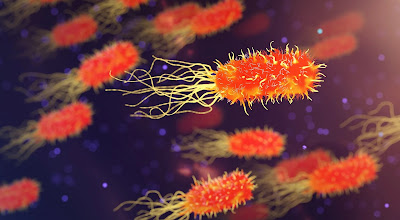GRAM-STAINING OF BACTERIA
Depending on the physical and chemical characteristics of their cell walls, the Gram staining technique is a laboratory procedure used to identify and distinguish bacterial species. Danish bacteriologist Hans Christian Gram developed it in 1884. The steps for the Gram staining technique are as follows:
1. A fresh, thin smear should be prepared on a glass slide using a bacterial culture.
2. Heat fix the bacterial smear to the slide by passing it quickly through a flame. This helps to preserve the cells & prevent them from washing away during the staining procedure.
3. Cover the smear with a crystal violet solution & let it sit for 1 minute.
4. Wash the slide with water to remove excess crystal violet.
5. Apply a decolorizing solution to the smear and let it sit for 30 seconds. Examples of such solutions include acetone or ethanol. This eliminates the crystal violet from some bacterial species’ cells.
6. To get the decolorizing agent off the slide, Rinse the slide with water.
7. A counterstain solution, such as safranin, should be applied over the smear, and it should sit for a minute. The cells that were not decoloured in step 5 are stained.
8. For the extra counterstain to be removed, rinse the slide with water.
9. Based on the color of the cells, examine the slide under a microscope to identify the bacterial species. Gram-negative bacteria appear red or pink, whereas Gram-positive bacteria appear violet or purple.
It’s crucial to understand that the Gram staining method cannot be used to identify all types of bacteria. It is merely one approach that can be applied alongside other strategies, such as biochemical testing, to precisely identify bacteria.

